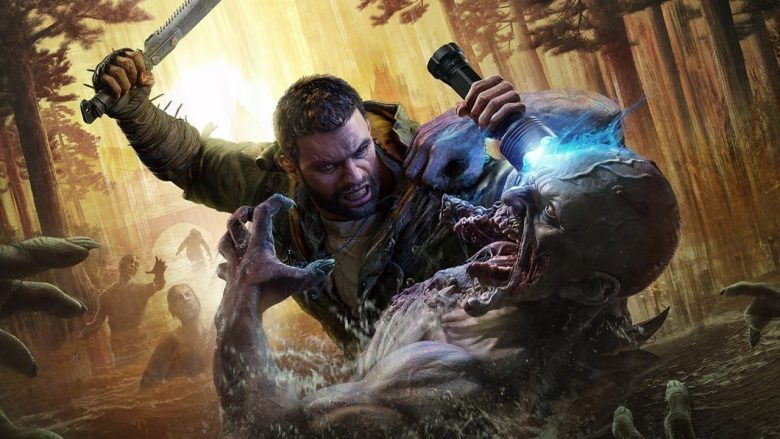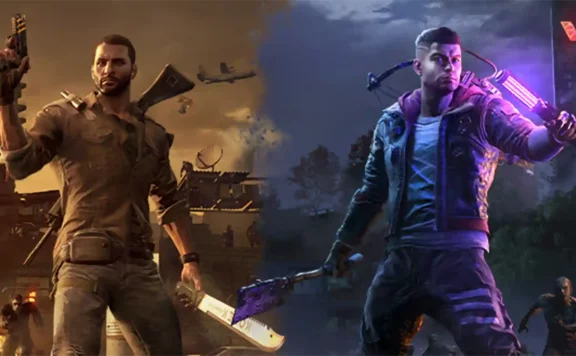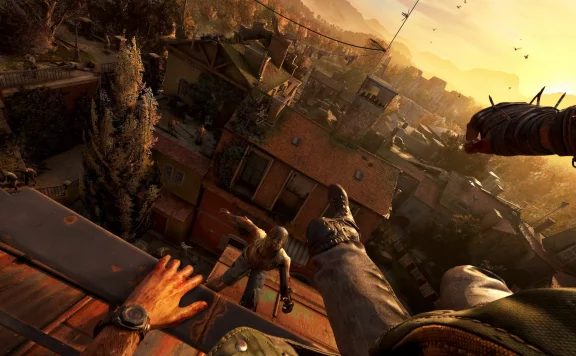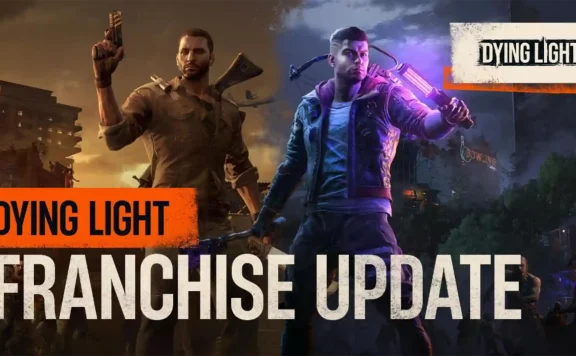Sometimes I think innovation is overrated. Look at the evolution of the crocodile as proof, should you need it. Barely changed as a species in millions of years and they’re doing just fine. I mean have you ever seen a crocodile that looks like it gives even the tiniest of shits? Well, Techland seem to have hit upon a similar method of self-improvement with the Dying Light series. Hundreds of tiny tweaks and evolutions to a well-established formula have created something truly formidable in Dying Light: The Beast, something that feels so familiar in execution that you won’t even notice all the improvements unless you go back and play the others.
For a start, Kyle Crane is back. He may have been a deeply generic action hero protagonist in the first game, but he spent a lot less time moping about than whatever-his-name-was in Dying Light 2. Having famously sacrificed himself for the people of Haran at the end of Dying Light, Crane proved so popular among fans of the game that he was resurrected by Techland for the huge DLC, The Following, which introduced a number of things to the franchise such as vehicles. And now in Dying Light: The Beast we step back into boots so manly he probably fills them with gravel before he puts them on, to once more pilot Kyle Crane across a series of interconnected rooftops, winding, highly-detailed streets, and dense forests, occasionally using small groups of zombies as either springboards or target practice.

The Beast begins with our granite-jawed hero waking up in a lab where he has spent several years being tortured and experimented on by The Baron, a bad guy so moustache-twirlingly evil he would be right at home in a Resident Evil game. While having your toenails pulled off and your balls electrocuted daily probably sucks, one bonus to Kyle’s predicament is that the bad guys have injected him with a Hulk virus that occasionally forces him to go utterly batshit crazy and rip zombie heads off with his bare hands.
After escaping the lab with the help of the mysterious Olivia, Kyle makes his way into the nearest civilisation centre, Castor Woods, ostensibly located in rural America but where almost everyone has a British accent. He meets the usual group of plucky Dying Light NPCs, who occupy the exact middle ground between noble resistance fighters and desperate apocalypse survivors. In between helping them with odd jobs around the local townscape, Kyle also finds himself tasked with hunting down Chimeras, highly experimental zombies whose blood acts as a serum to both strengthen his deviation and help him control it. The progression of this virus is one of Dying Light: The Beast’s coolest elements, as Kyle begins the game literally unable to stand and gripped by psychotic bursts of mindless violence, but will eventually come to fully control it, all changes signified by the evolution of standard gameplay rather than just cutscenes or boosted stats.
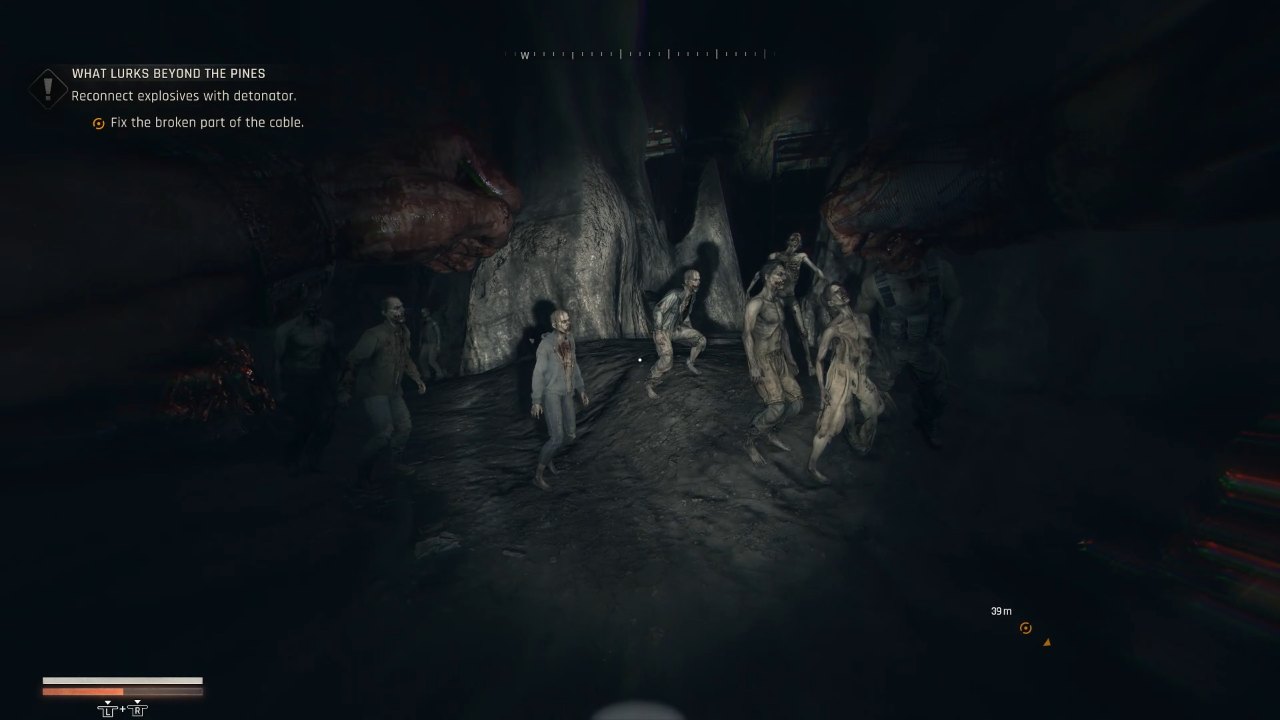
In fact the story itself is pretty solid. The Chimera encounters provide fairly regular boss fights that each result in you earning Beast Points that let you directly improve Kyle’s Beast Mode abilities, giving you a ground pound or the ability to shoulder-clock shamblers with the force of an out-of-control school bus. Later, you can learn to change at will, giving you a massive combat boost right when you need it. Which, to be fair, is usually at night.
Despite the game starting out tough thanks to the damage-sponge enemies, even the big special zombies become little more than an annoyance by the time you’re halfway through the story and loaded up with more explosive ordnance than an urban demolition crew. Although zombies will shambles or run at you en masse, they’re easily avoided and easily dispatched once you’ve strapped an acid dispenser and bottle of liquid nitrogen to the haft of a sledgehammer you found in a puddle. As with previous titles in the series, Dying Light: The Beast only really becomes hard at night, and the difference is jarring to say the least. In the daytime most of the game is a literal jog in the park and the hardest thing you’ll face is the occasional leaper or spitter, but at night time the Volatiles come out, and they don’t mess about.
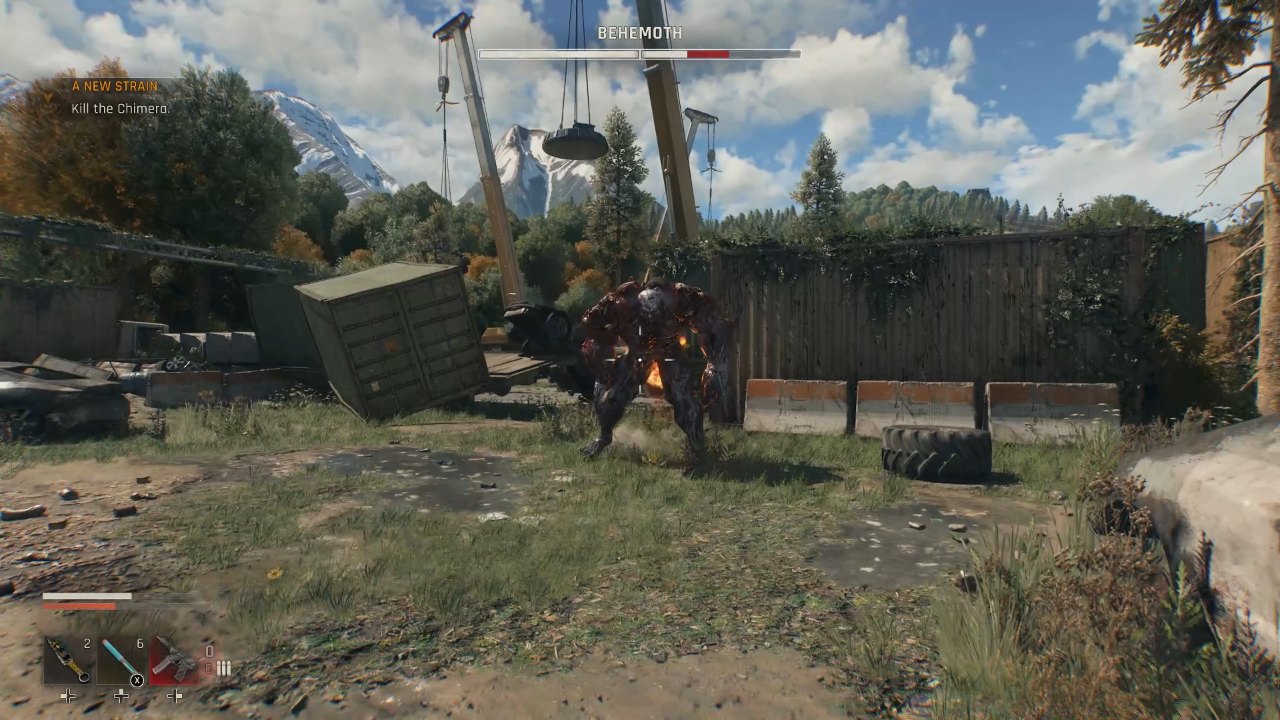
Not only are they super fast and aggressive, they’re almost virtually unkillable for the first two thirds of your time in the campaign, requiring that you simply run when they detect you. Their only real weakness is that they can’t see, and hunt by sound and smell; therefore you need to find either a hiding place or a source of UV light to get into to escape them. It’s as easy to simply do everything in the daytime, though, as The Beast only forces you out at night during a handful of story missions. That said, in the final hours before sunset you can venture out to find Hives, special buildings filled with resources that you’ll need to raid and escape before the Volatiles wake up.
Raiding is a big part of Dying Light: The Beast, too. There are stores and depots all over Castor Woods that hold special items and crafting resources, meaning it’s always worth checking them out, silently killing the infected within so you can escape with your loot. Some are multi-levelled and labyrinthine, requiring liberal use of your “survivor sight” (focus mode) but all are worth the effort for new gear, weapons, blueprints, or rare materials. Although the mechanical process becomes a little samey after your fifth or sixth dive into a dimly-lit, mostly-ransacked fashion store looking for feathers, it still feels cool and thematic to be scavenging for supplies in an apocalypse – I mean you can’t have too many homemade flamethrowers during a zombie outbreak, can you?
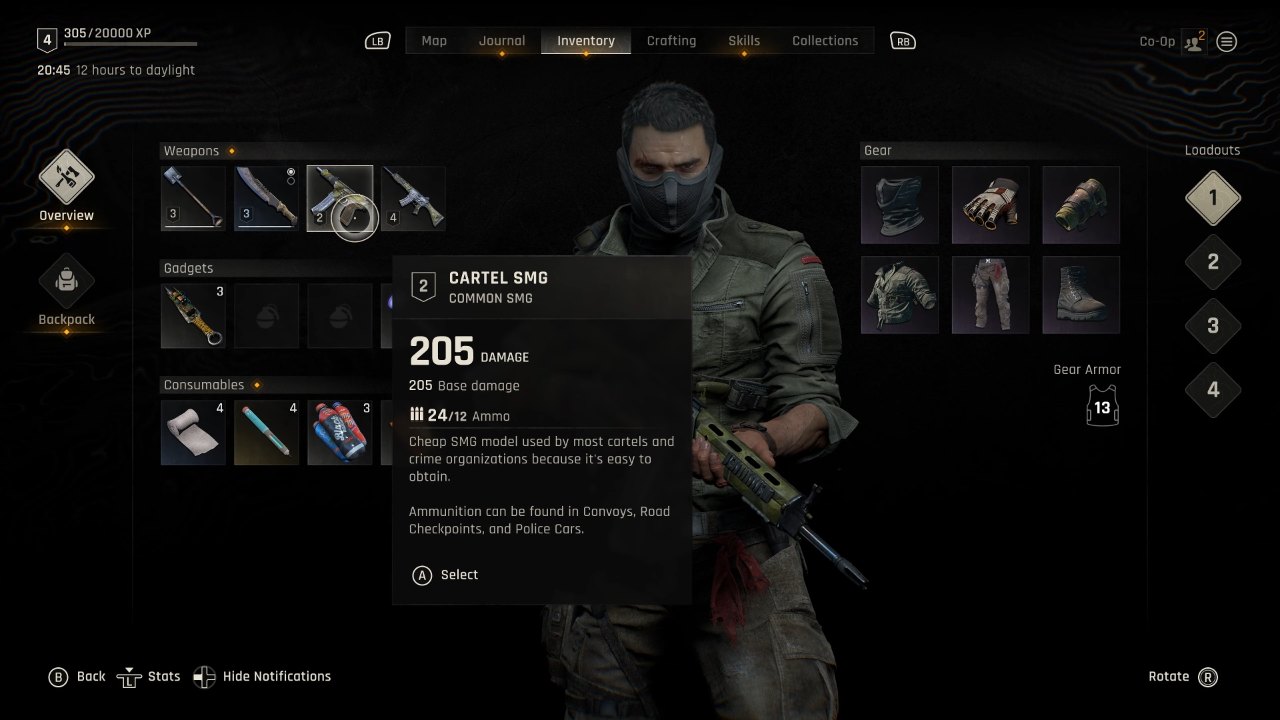
Regardless of what you’re doing, the two main gameplay prongs of Dying Light: The Beast are movement and combat. With little speedy travel besides stealing specific cars with very limited fuel, you’ll spend a lot of time on the former. Thankfully, this is some of the best first-person parkour I’ve experienced. While it’s still possible to misdirect a jump and fling yourself off a cliff, it’s pretty precise for the most part, and Kyle has all the weight and heft you’d expect from 200lbs of grizzled muscle catapulting itself between rooftops at high speed. It feels incredibly satisfying when it’s flowing right, and you’re encouraged to stay above ground where possible. You’re even given access to a surprising number of upper floors of various buildings to charge through or ransack as the situation allows.
Combat, on the other hand, can feel something of a mixed bag. While it’s incredibly cathartic to carve your way through the mindless hordes with a napalm-infused breadknife, there are few things more satisfying than straight dropkicking a motherfucker off a rooftop. You’ll swing bats and hammers and machetes, or wield guns with super limited ammunition that often make too much noise to be useful for anything other than desperate survival, but it only becomes really fun when you enter Beast Mode and start one-shotting everything or popping heads like inflated paper-bags. Sometimes the guns feel imprecise, and the zombies can take one-too-many swings to put down on the standard difficulty, often making combat feel like something you want to avoid rather than engage with, which may be entirely deliberate.
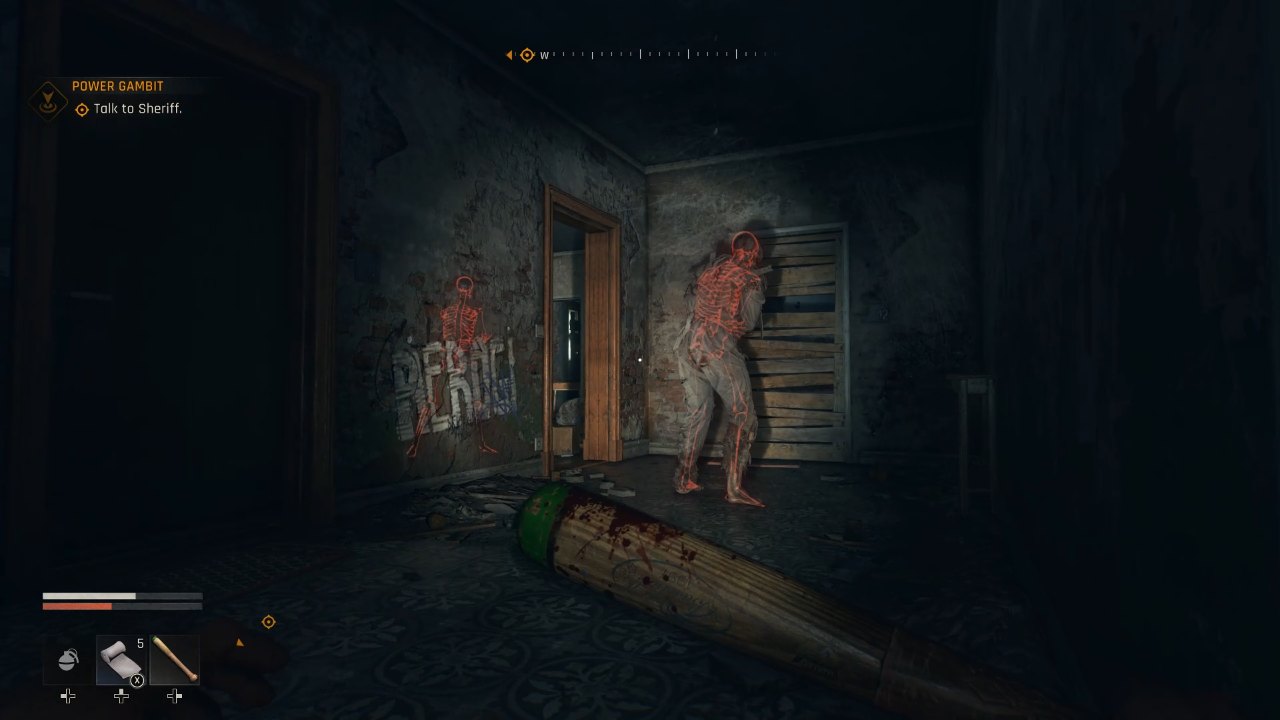
Like its richly-detailed environments and super-satisfying combat animations, much of Dying Light: The Beast feels carefully curated to not waste anyone’s time or attention. There’s quality of life in everything, from being able to repair and modify weapons on the fly, to Kyle’s bottomless pockets and the numerous safehouses dotted around where you can sleep safely until sun-up. Everything feels smooth, like they took Dying Light 2 and sanded down the rough edges to make it just that little bit easier to slide home. It’s gory in the way comedy horror is gory, with chunks of brain and bone flying about even as enemies ragdoll atop one another or get impaled on random scenery due to one of the minor visual glitches. The story is impressively pulpy stuff, with enough intrigue and obvious twists to keep you smiling throughout, while the combat and movement are incredibly tactile and cathartic if not mechanically flawless.
Cutscenes are short but well directed, while the cast of survivors and villains is colourful and helps propel the story along in the right ways. As a sequel, Dying Light: The Beast succeeds in expanding on the foundations laid by its predecessors in ways that feel meaningful and player-minded, in a sandbox that is never held back by some inconsistent physics and the odd bug. The Volatiles remain as terrifying as ever, while the Chimera boss fights feel meaty and satisfying to overcome. And if you find yourself struggling, and all else fails, never underestimate the tried and tested tactic of setting something on fire, and then dropkicking it right up the chuff.
